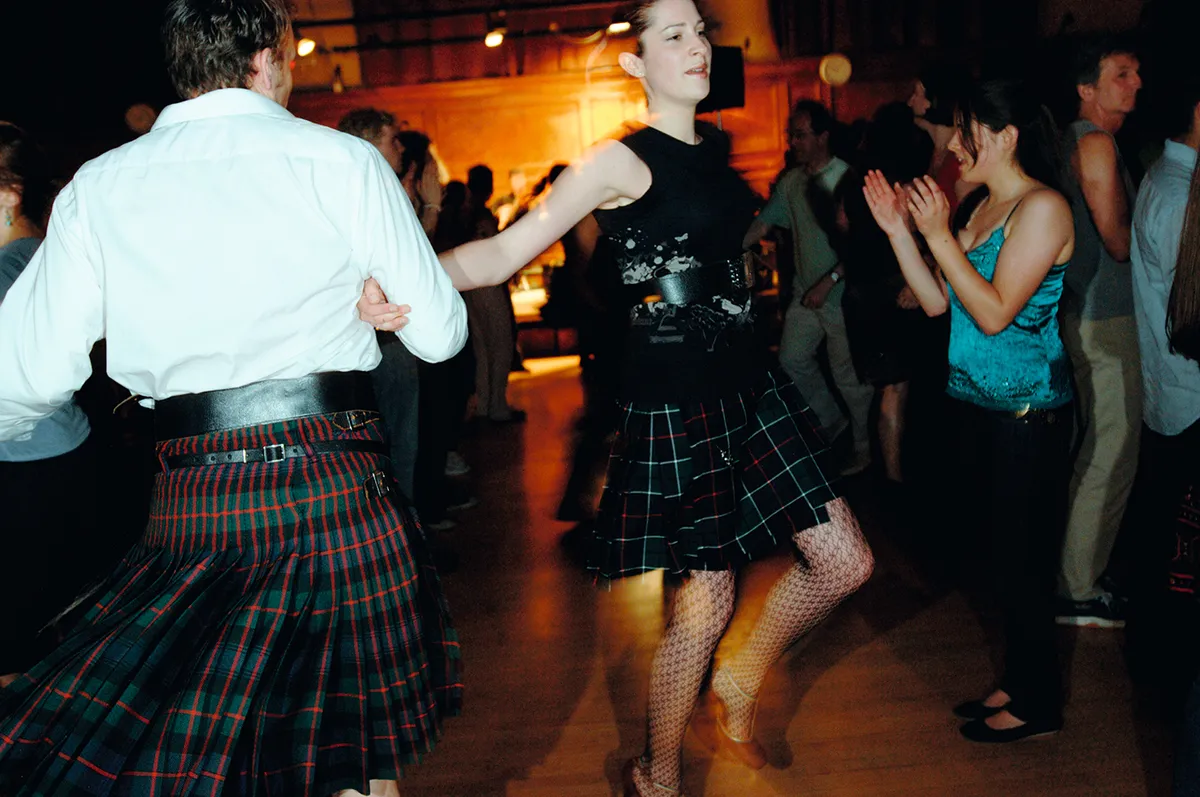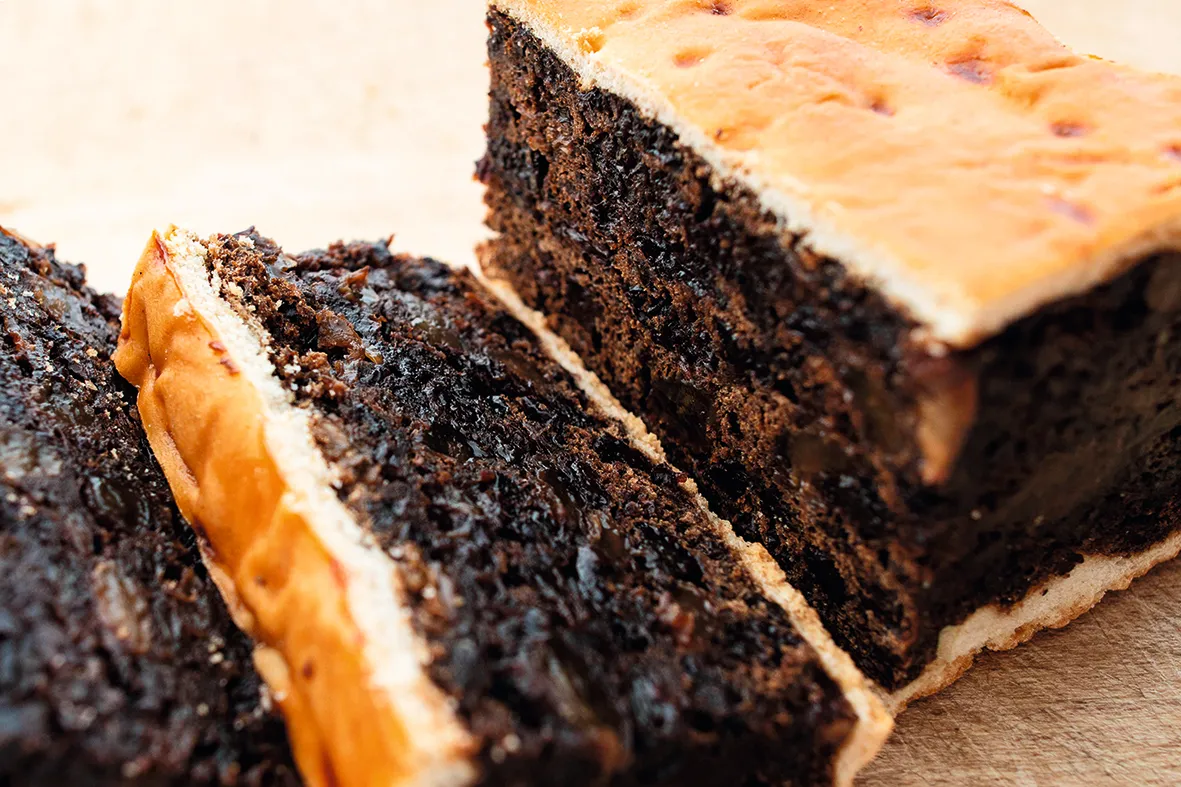Winter is dark in the Scottish Highlands and islands. Shetland averages fewer than six hours of day light from sunrise to sunset in late December, and the more southerly Inverness gets only an extra 45 minutes. When the air is barbed and the scenery is bleak, new year festivities offer a rousing reminder that the light will return.
Today Scots celebrate by drinking in the streets, peering at fireworks through a haze of drizzle, sharing midnight kisses and uniting in spirited – if not always comprehensible – renditions of Auld Lang Syne.
But over the centuries, the Scots have welcomed the new year in a wide variety of ways. In most areas, Hogmanay has long constituted the biggest community event on the calendar – often bigger by far than Christmas. But what is the history of Hogmanay? When is Hogmanay? And how is Hogmanay celebrated today?

What is Hogmanay?
To understand how Hogmanay became so prominent we must go back to the 16th century. Before the Reformation, Scots liked to linger over their midwinter celebration, which began with Christmas Day and concluded with the feast of the Epiphany on 6 January (Uphaliday, or end-of-holiday). The period was known by the Scandinavian term ‘Yule’. That all changed in 1560, after the Scottish parliament declared the country Protestant. The new kirk’s First Book of Discipline attacked the observance of holy days as ‘superstitious’; Christmas, the reformers declared, was a Papist invention.
In subsequent decades, kirks across the country battled to stamp out traditional celebrations. Church records show the Kirk-Session of Elgin repeatedly cautioned parishioners over Yule festivities – an exasperated declaration of 1618 expressly condemned “dancing, singing carols, play[ing] at the football […] women to be clad in men’s apparel or men in women’s apparel, casting of snowballs, hurling with stools on the streets and […] all insolencies and superstitious rites”. Guilty parties would be fined and imprisoned, or “punished in their bodies” if they were unable to pay.
These prohibitions were reinforced by a 1640 act of Parliament that outlawed the celebration of Yule. Astonishingly, it wasn’t until 1958 that Christmas was reinstated as a public holiday in Scotland.
In the Lowlands, the suppression of Yule refocused celebration on the new year, which didn’t have the same uncomfortable associations with Catholicism. In more remote areas, including much of the Highlands, it was difficult to enforce restrictions, and midwinter festivities remained lengthy affairs. In 18th-century Shetland, celebrations lasted 24 days.
Today, Lerwick’s dramatic Up Helly Aa spectacle, which involves a costumed procession and the burning of a Viking boat, does not take place until the last Tuesday in January. Highland and island parishes were also more likely to resist the Gregorian calendar shift of 1752, which put New Year’s Day back 11 days. This meant several communities celebrated New Year’s Eve on 11 January. But over time, methods of welcoming the new year have become more uniform across Scotland.

What is the origin of the word Hogmanay?
The term ‘Hogmanay’ was traditionally used to indicate both New Year’s Eve and a New Year’s Eve gift. The earliest recorded Scottish usage comes from 1603, when the Kirk-Session of Elgin rebuked a man for “singing and hagmonayis” at new year.
There are many other forms, including hogmana, hug-me-nay, hangmonick and the wonderful huggeranohni, recorded in Shetland in 1948. The etymology of the term is unclear; scholars have argued for French, Greek, Norse, Scandinavian, Goidelic or Flemish roots.
Perhaps the most compelling possibility is it stems from the medieval French aguillaneuf, which had the same meaning, and could be rendered as hoguinané. The French may in turn derive from the Latin hoc in anno, meaning ‘in this year’.

How was Hogmanay celebrated in the past?
So how did Highlanders celebrate in times past? Music, singing, dancing and bell-ringing were customary modes of celebration. So, too, was eating and drinking. Oatcakes or bannocks (flat breads cooked from grain) were traditional fare. Other popular options included bread, cheese, cake and local staples.
Recalling Hogmanay in her childhood home in the late 1950s and 1960s, the Orcadian writer Morag MacInnes mentions substantial meals of salted herring and tatties. Whisky was the first choice of drink. Nineteenth-century accounts told of how Scots made the ‘het pint’ – a concoction of whisky, ale, sugar and nutmeg – and took it out into the streets to share with neighbours. Traditional Scottish Hogmanays were not necessarily bacchanalian: it was usual to spend much of the night making orderly visits to each neighbour in turn, delivering good wishes.

What is first-footing?
By 1800, first-footing was popular in the Scottish Lowlands (as well as in Wales and much of England), and it became established in the Highlands later that century. The first-footer was the first visitor to cross the threshold after midnight. He might carry a lump of coal or food and drink to represent warmth and sustenance in the new year.
London literary magazine The Athenaeum explained in 1830 that the proper Scottish first-footer was a prosperous bachelor who brought shortbread, cheese and a kettle “singing full of het-pint”. His presence betokened good luck, but if he dropped any shortbread, a friend would be lost in the new year. Dropping cheese meant the loss of a relation. And if he were so careless as to spill the het-pint, none of the young ladies of the house would “enter into the blessed bands of matrimony” that year.
What is guising?
Also customary was guising. This could entail simply blackening the face with soot or burned cork, but it might mean donning a full costume. In late 19th- and early 20th-century Shetland, guisers commonly wore outfits fashioned from straw. Guisers visited different houses in turn, and sometimes sang, played music or performed plays. It was also common for people – often children – to go between houses to beg for food or money. In the northern Hebrides, young men from poorer crofts called on their wealthier neighbours and recited supplicatory rhymes.

What is redding?
Another significant custom is redding (or cleaning) the house. In years past, the women of a household would sweep the floors, polish the furniture, dust the crevices, wash and change the linens, and darn neglected stockings. Highlanders also practised saining, or the blessing of the house. In a work published in 1823, William Grant Stewart wrote that Highlanders burned juniper at new year to cleanse their homes and guard against disease.
Fire rituals on Hogmanay?
Symbolising warmth, vitality and protection from malevolent spirits, fire featured in many Scottish festivities, including Hogmanay. In January 1689, the kirk session of Duffus in Moray reprimanded a group of young men for making “a burning clavie, paying it superstitious worship, and blessing the boats after the old heathen custom”. A clavie is a pot of fire, made by cutting a barrel in half, filling it with kindling and coating it in tar. This practice survives, transplanted to the town of Burghead, Moray. On 11 January (Hogmanay before the calendar change), the clavie is set alight and carried through the town, then mounted on a hill and left to burn. Locals collect the embers, which are said to bring good fortune.
From the late 18th century, various authors recorded another curious ritual practised in the Highlands and Western Isles. A man would don a cowhide and run three times around a house making bellowing noises. Others from the community would chase him and beat him with sticks. The 19th-century writer Robert Chambers explained that at the end of the ceremony, a piece of sheepskin was burned and held to participants’ noses, for protection against witchcraft or infections.
Why do people celebrate Hogmanay?
The primary purpose of Hogmanay festivities is to bring people together, shake off adversity and ensure good fortune in the year to come. In January 1918 during the First World War, the Aberdeen Press and Journal reported the Gordon Highlanders had celebrated Hogmanay in “caves quarried deep below the trenches”, some 400 yards from enemy lines. The men shared food and rum punch, sung songs and remembered lost friends.
This principle of forgetting hardship in a spirit of conviviality also appears in an 1827 song by James Hogg, which feels just as poignant now as we move from the horrors of 2020 into hope in 2021:
The year is wearin’ to the wane
An’ day is fading west awa’,
Loud raves the torrent an’ the rain,
And dark the cloud comes down the shaw;
But let the tempest tout an’ blaw
Upon his loudest winter horn,
Good night, an’ joy be wi’ you a’,
We’ll maybe meet again the morn!
What is a black bun?
Midwinter celebrations call for hearty fare. In the early 16th century, the Scottish court celebrated Twelfth Night (the eve of Epiphany) by eating cake. Traditionally, a bean was hidden in the cake, and whoever found it was appointed the ruler of the festivities.

After the Reformation, kirk sessions scolded bakers for supplying ‘Yule bread’, but failed to stamp out festive cookery altogether. Eighteenth-century recipes described how to make a ‘plum cake’ wrapped in dough, and by the 19th century this concoction was termed ‘Scotch Christmas bun’. As the century progressed the cake became sweeter, the dough morphed into pastry crust, and the dish became a Hogmanay staple.
Words: Martha McGill
